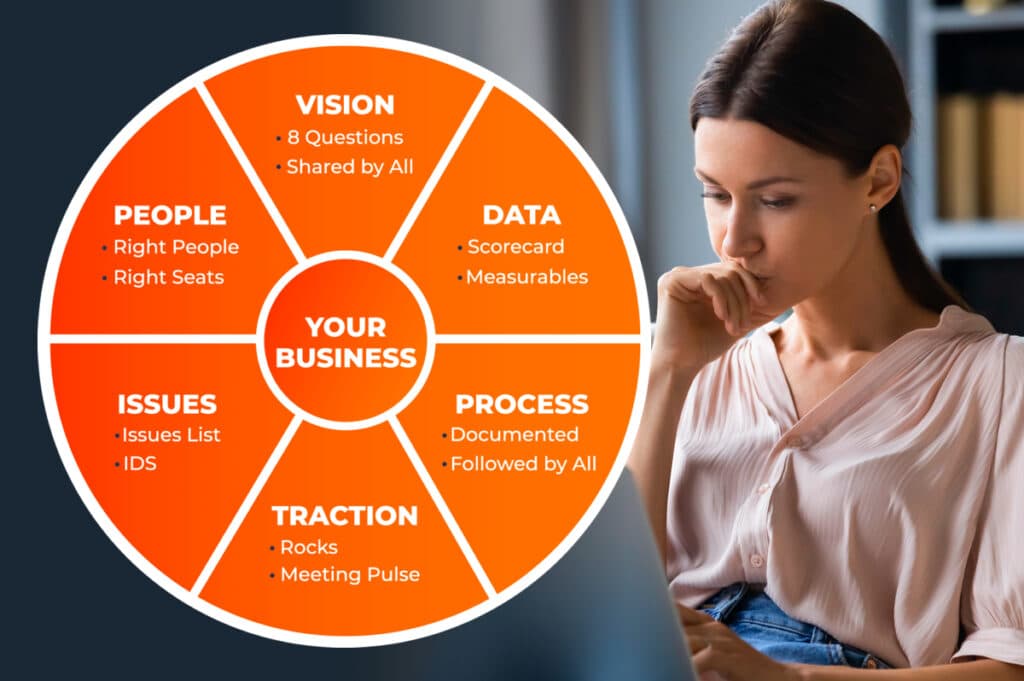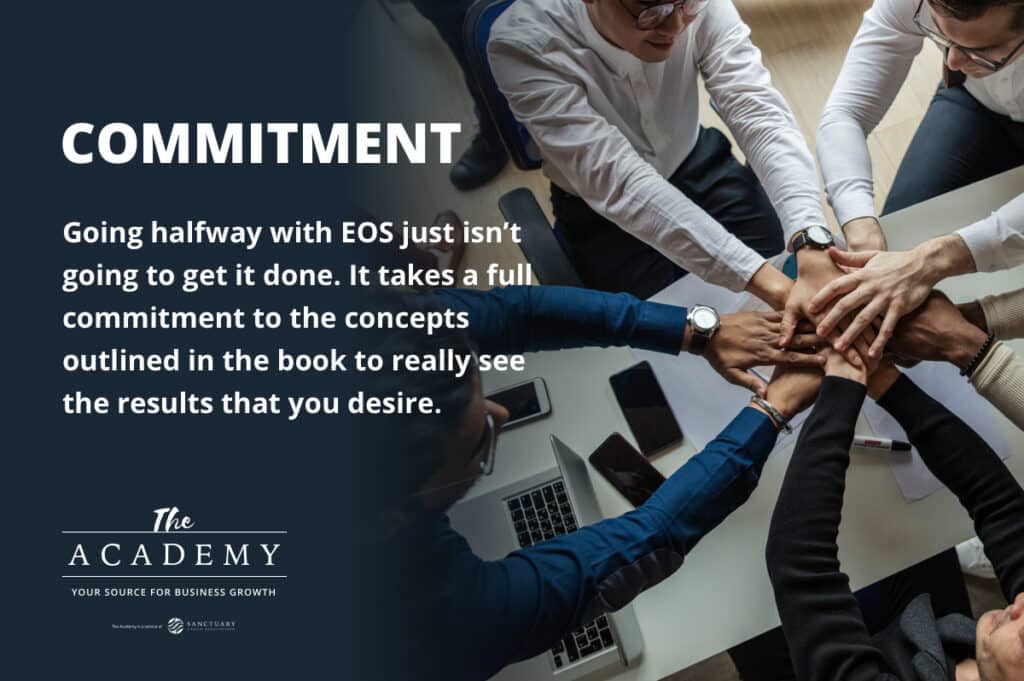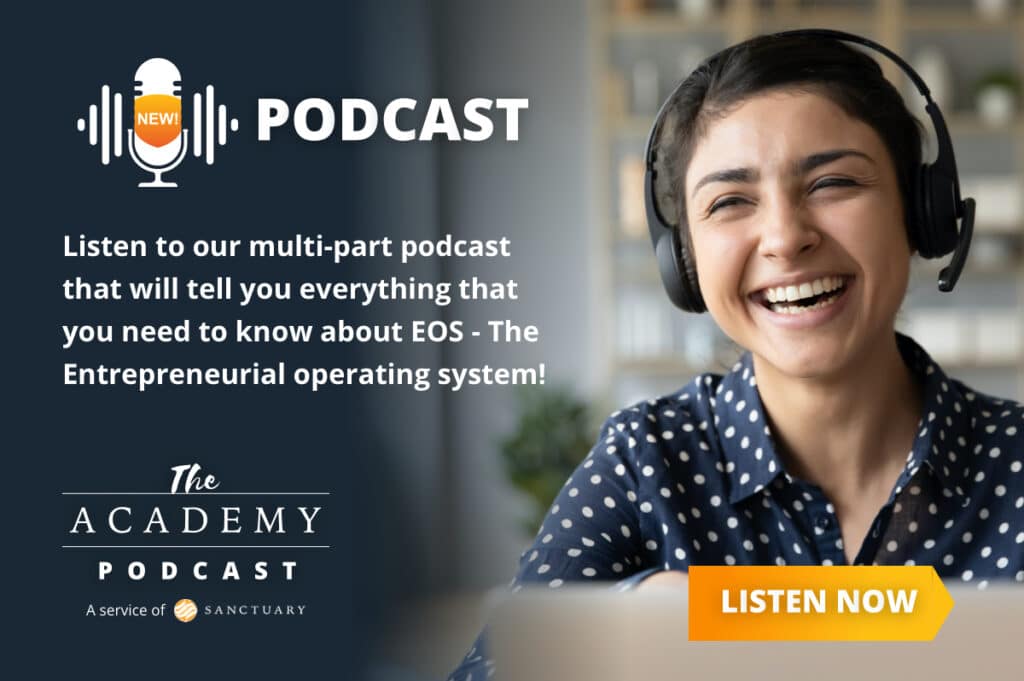
Systems are everything in business. While it might be tempting to just run your business through sheer hard work and effort, that won’t always get you very far. Instead, the consistent application of reliable systems will allow you to overcome problems, build your brand, and develop a loyal customer base.
Unfortunately, while systems are fully integrated at the level of large corporations, smaller businesses sometimes struggle in this area. That’s where the Entrepreneurial Operating System, or EOS, comes into the picture. This model was put forth in a book called Traction by Geno Wickman, and it has been utilized by countless business owners since its introduction.
This article will give you a big-picture view of what EOS is, why it is so important, and how you can start to implement some of the core concepts and processes in your own business. Of course, you may also want to read the book for yourself to gain a deeper understanding, but you can get started with the information below.
The Inherent Problem
Before we can understand why a solution like EOS is needed, we need to stop and think about the problem for most entrepreneurs and owners of small businesses. People in this position tend to think of themselves and the business as one and the same – the person is the business and vice versa. While there is something admirable about being completely invested in a project you believe in, this approach is typically not sustainable and likely not in the best interests of the company’s future.
If a business is to grow and thrive, and if the owner of that business is to enjoy the experience and find the whole process worthwhile and fulfilling, there needs to be a separation of person and company. Rather than a single person being the go-to problem solver for everything in the business, there should instead be systems in place that can be relied on for solutions and a path forward. Will these systems be harder to implement upfront than just doing everything yourself? Possibly. But if the company is going to grow out of its own shadow and become a recognized player in the market, systems are going to be critical.
Listen to our multi-part podcast that will tell you everything that you need to know about EOS – The Entrepreneurial operating system! Click here.
Six Key Components

As a starting point for the framework that EOS is going to help you create around your business, you can look at six important areas that will inform how you think about operations and the decisions you make. Let’s go through a quick introduction of each:
- Vision: You may already have an inherent understanding of what the vision is for your business, but it’s good to formalize it. What is it that you want to get out of the business, and where do you see it going in the future? The more detail you can include in your vision, the better you’ll be able to make decisions later that are guided by an overall plan and not just a whim.
- People: No business will go any further than its people allow. With a great team of people who are all gathered around a common vision, anything is possible. In the absence of such a team, however, the business is doomed from the start. Assembling the right people means not only making good hiring decisions but also supporting those people once they are in your business to give them the tools and opportunities needed to make a difference.
- Data: Relying on data is crucial for successfully charting a path forward in business. Without good data, and without consistently using that data, you will only be guessing about what is best for your company’s future. EOS recommends creating a “scorecard” to track the most important pieces of data over time. You must choose the right metrics based on your business operations. Regularly updating and reviewing your data scorecard can help spot patterns and make adjustments.
- Issues: Ignoring your business’s issues or problems won’t make them disappear. Instead, view them as opportunities for improvement. By creating a space to record all issues and developing a process to resolve them on a regular basis, your company can run more efficiently, and individual team members will be less likely to face frustrating problems.
- Processes: Many business owners fall short in this area. Although owners may recognize the value of processes, it’s easier to resort to ad-hoc management and handle problems as they arise. The goal is to establish a process for as many tasks as possible. With a documented process, employees can follow the steps to complete a task, rather than struggling to find a solution on their own or seeking help.
- Traction: Maintaining traction in your business means setting goals and focusing your activities accordingly. This is often called “rock setting,” where your metaphorical rocks represent targets that guide your operations. Holding rock-setting meetings once every three months is a great way to ensure that your business’s vision remains true, and the objectives you set are aligned with the bigger picture.
You aren’t going to instantly put your business on track with regard to all six of these categories. There is a lot to work through here, and it will take some time to make organizational changes – especially if you have been in business for a while and already have a certain level of momentum associated with your activities. However, you can get started right away working on these areas and finding meaningful ways to make improvements.

It Takes Total Commitment
One important point that needs to be made about growing and succeeding with EOS is that it will only be successful if you are all-in on the process. Going halfway just isn’t going to get it done. It takes a full commitment to the concepts outlined in the book to really see the results that you desire.
You might think that it’s easy enough to decide that you are going to take your business in this direction, but convincing yourself of the value of this system is not enough – you need to convince the rest of your team, as well. Don’t just be satisfied with them going along because you’re the boss and they don’t really have a choice. Instead, aim for their enthusiastic commitment as a result of them seeing how everyone can benefit when this is done correctly.
A business-wide meeting at the start of this initiative is really the best way to bring everyone onto the same page. In that meeting, you’ll clearly explain what this concept is and where it comes from, as well as talking about how everyone can benefit.
Remember, your employees don’t have the same investment in the success of your brand as you do, so the talking points need to be more varied. Highlight how their day-to-day experience of working in the business could be improved thanks to the organization and predictability that EOS can deliver. By getting people truly excited about this new direction, they’ll be more likely to stick with it through the early bumps in the road.
Choose a Path
There are two distinct ways to approach making the shift to EOS – doing it on your own or hiring an EOS integrator to guide the process. Each of these approaches can work, although making the investment in an integrator is something you’ll want to strongly consider if it fits within the budget. The presence of this person can help you make sure that the principles are being implemented correctly and that any issues are being sorted out right away.
If you opt to do it yourself, you can expect EOS to take up much of your time and effort over the next year or two. The 18-month mark is a commonly cited timeframe for how long it will take to fully bring EOS into your organization, and that might be optimistic if you decide to go ahead on your own. Of course, if hiring an integrator isn’t within your budget or you’d simply prefer to keep this process in-house, you can still have success – but it might take longer and it will probably require quite a bit of added effort along the way.
The Job is Never Done
Once you get started, you are never “done” with the implementation of EOS. Rather, this is something that you will now have adopted into your business, and it is going to take ongoing support to keep it working as it should. Just like a set of ads that you are running or a product that you put out into the market, without the right support along the way, it’s not going to continue to work.
Now that you are more focused on the processes within your business, you can use this improved systematic approach to ensure that your EOS processes and best practices stay on track. Conduct periodic reviews of your core concepts and frequently revisit the six categories we highlighted earlier to identify where any tweaks or changes may be required. The best part about this process is that once you witness its power and the positive impact it has on your company, justifying the time and effort invested in maintenance won’t be a problem. It will be more than worth it, and with time, it will become easier.
One of the greatest strengths of EOS is its adaptability to the unique needs of each business. As you grasp the key ideas and build relevant systems for the work that needs to be done, you can start applying this type of thinking across your entire business. There is tremendous potential here, so start right away, and you won’t have to wait long to witness a major transformation. Good luck!

Most Popular Articles

Seeing Favicons in Your Google Search Results? Here’s Why…
Have you noticed anything different in your Google Search results lately? Google added tiny favicon icons to its organic search results in January. It was…

Business Growth and Digital Marketing News & Tips 4-14-24
Did you know? It’s five to twenty-five times more expensive to acquire a new customer than to retain an existing one. Increasing customer retention by…

Business Growth and Digital Marketing News & Tips 3-28-24
With the desire for precise measurement tools to determine ROI, there has been a rise in attention metrics. These metrics, which often utilize eye-tracking data,…








